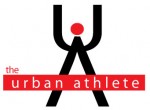Audience: Runners and Therapists
Purpose: A quick guide to running injury prevention.
Preamble
Injury prevention for runners is not rock-solidly founded in science… and may not even be possible. With runners it is more injury management. You are going to get injured and you are going to have some aches and pains. The ideal is to minimize your lost training time and avoid some of the nasty injuries that can jeopardize your long term running and goals.
As I said, injury management is not a science. What works for one person often does not work for another. Unfortunately, there are few strong statements that we can make about injury prevention. If a therapist tells you that you must do “x” to prevent injuries then for the most part they probably don’t know what they are talking about. Injury prevention articles tend to glom onto whatever is fadish (e.g. core stability, dynamic warm ups, stretching, minimalism). All of these may play a role but there is certainly no absolutes.
This article will be some opinion that is informed by some research. All of the suggestions can help some of the time.
We can roughly categorize injury factors into extrinsic factors (something outside of yourself) and intrinsic factors (things about you).
Injury Prevention cheat sheet: I have attached a pdf file simple running injury prevention sheet that is a general overview of injury prevention for runners and some exercises that may be helpful. For therapists, please feel free to use this for talks for different athletic groups.
Extrinsic Factors
1. Have a running plan and seasons
Runners are NUTS. We just want to run…all year round. What other sport does this? Sports have seasons, sports let you prioritize different aspects of your training throughout the year. Sports have off-seasons, pre-seasons and competition seasons. We need this too. So what can you do?
Get a good, progressive running plan. Follow it. Don’t do too much too soon. Those three pithy sentences are everything you need to prevent injuries…for the most part. What are the basic elements of a good plan?
a. Different training cycles throughout the year with goal races chosen at times for you to peak
b. A progressive training plan that allows increases in mileage that you can handle. This might be a 10 percent increase of weekly volume that is mixed with plateau weeks. But be flexible. Maybe you can only handle 5%. You have to increase your volume and pace slowly. There are numerous books and online guides that can help you increase your volume and speed safely (see therunningroom.ca, Jeff Galloway, Jack Daniels’ or Run Less, Run Faster). Here is a sample of the Furman University “run less run faster” 3 day a week training program – Click here
2. Be flexible about your running
Sometimes you need to ignore number one. I just advised that you follow a specific running plan of whatever coach you fancy. Unfortunately, many plans are not tailored to you but are designed for the average plus/minus a standard deviation about said runner. If you are feeling beat up and getting injured than you need to modify the program. Don’t feel bad about this. We are all different and should not expect everyone to do the same thing. Having an experienced coach can really help you through this. This is why I recommend coaches (a la Nicole Stevenson) or some very great instructors who are also great athletes at different running programs. Click here for a great running blog from a Running Room instructor who is also a great runner.
3. Listen to your body
This is really about overtraining. If you are not able to make your prescribed work out times, are consistently feeling run down, ache all over and ache specifically during runs then maybe you need a mini-taper. Just a 3-7 day volume and pace reduction to get you charged up again. Talk to your coach and listen to your joints.
4. Equipment
Shoe science ain’t no science. Your feet and body tell you what feels good. Read below for more on footwear, foot striking and barefoot running.
5. Be Healthy
Your body is an adapting machine. Pro athletes are not only stronger and faster than you. They can also recover better. Their bodies are better at adapting to the strains placed upon them. If they get injured they adapt faster. When they train hard they adapt and are ready to handle that new load. You need to optimize your body’s ability to adapt. Here are some suggestions and I repeat, they are not hard and fast but work for many people.
a. Sleep more
b. Eat better (see a dietician, eat real foods)
c. Prepare your body (see the lower section on Maintenance Exercise)
d. Treat yourself to someone else’s hands on you (try Physio, Chiro, Massage). All of these things (name a technique – ART, Graston, Fascial Manipulation, joint manipulation) can help some people some of the time. I often look for minor dysfunctions (or at least what I presume to be a dysfunction which is still a murky construct) in joints before pain has reared its head in an attempt to prevent future problems. The vast majority of pro athletes will have this type of manual therapy work done regularly. You may or may not need it – try it but beware of hard sales and any catastrophizing on the part of your therapist. A lot of therapists will take an x-ray or perform some scan that tells them how incredibly dysfunctional you are and if you don’t get several treatments for a prolonged time you will be ruined. This is poppycock. Avoid these people. No one is that effed up.
6. Did I mention follow a good training plan.
INTRINSIC FACTORS
1. Anatomical or structural things about your body are WAY overrated.
Knock knees, flat feet, high arches, wonky hips, scoliosis, femoral anteversion. These are all things you can do nothing about and also have no relationship to injury. Please don’t worry about this and don’t let some one tell you they can correct a problem that is not a problem. This is catastrophizing and worthy of your disdain.
2. Orthotics – not really intrinsic but they still try to affect you.
I have a huge ambivalence towards orthotics. The research behind their prescription and the rationale for what they might do is rather weak, conflicting and often does not follow common sense. Yet sometimes I use them with patients (very rarely) and have patients that swear by them. I know marathoners and Ultra runners that absolutely feel that they need them to function (whether this is a good thing or is another problem that should be addressed is another issue). My bottom line with orthotics is that they are not magic, they may help you as they have helped others and there is no certain way of knowing whether you will respond fantastically to orthotics. All of the assessment tools that are typically used for the prescription of orthotics have not been sufficiently proven. That being said they may be worth trying. If you read this paragraph and thought that I said a lot without saying nothing you may be correct.
3. Stretching
So popular now. So popular to hate it and so popular to love it. The hate comes from decades old research suggesting that acute stretching decreased (transiently) the strength and neural drive to muscles during explosive or high intensity exercise in relatively simple exercises (e.g. vertical jump). This loss of strength was not found in some complex exercises (e.g. kicking a soccer ball) and I was unable to reproduce a loss of velocity in some preliminary research looking at the golf swing. There is also a great deal of research suggesting that stretching before or after exercise has no injury prevention effect (but no harm effect as well).
As for running there is some research that suggests that stretching immediately before running makes you less efficient. Alex Hutchinson’s blog (sweatscience.com) really illustrates these studies…but there are previous studies and current research that does not agree with this work. Additionally, there is some research that suggests that if you do a warm up after you stretch then this takes away all of the negative aspects of stretching.
Because of all this most people suggest that you stretch after you run. I often ask, why stretch at all if you don’t have a deficit in your range of motion? We are not gymnasts, we don’t need a great deal of range of motion so unless you are lacking some thing there may not be any benefit to stretching at all. In terms of injury, the relationship between any injury and stretching is very poor, non-existent or occasionally present. Which leads us to…
4. Flexibility
Having more flexibility or lacking flexibility is not consistently related to any injury related to running. My opinion on this one is that this must be taken on an individual basis. If you are constantly getting injured and have flexibility deficits (relative to your peers) or have asymmetries between sides of your body than maybe you need to work on this. If you are relatively injure free, have never stretched then why should you start? Because some physio told you to…don’t bother. A quick qualifier, if you are reading this as a therapist and want research to support this, I have nothing.
Further, runners are stiffer than others. This allows them to bounce (to store and release elastic energy). This increase in muscle and tendon stiffness maybe increases their efficiency. And if you want to get technical…
Stretching does not change muscle stiffness, it only allows you to tolerate more muscle stretch.
In my opinion, I can’t rationalize every runner starting a stretching program. That being said if you love stretching and it works for you then please do not stop.
5. Warm Up
Yes, please do. Prepare yourself for your run. Move your limbs and body in a manner that will be required during your sport. Start slowly and progress. This is a warmup. Easy, no? Start running slow and build to speed. Do form drills (As, Bs, Cs), Do strides, Do Skip, Do Shuffle, Do Carioca, Do Backward running. Swing your legs back and forth and side to side. Swing your trunk around. There, that is warm up.
6.Strength Training
YES, YEs, Yes, yes.
Absolutely do this. Before everything talked about above except following a good plan (that is always priority #1). Strengthen your lower body, your hips, your trunk and your upper body. What consistently shows up as factors related to injuries is some sort of muscle strength weakness or imbalance. In runners, the “core” gets all the press (although it should not because the research is not there yet) but the HIPS have all the science. Hip flexor and hip abductor strength and endurance are consistently related to lower extremity injuries and occasionally to lower extremity faulty mechanics that relate to injuries (although this is debatable and worthy of an article). I am also aware that the predictive ability of having weakness does not relate to future injury for may injuries (i.e. we know that current ITB pain is related to current hip abductor weakness however, there is little predictive research suggesting that people with weak hips end up with injured ITBs) and I have some reservations about this research and think that strength training has benefits above injury prevention that can still justify its inclusion. If you have injuries then strength training is fantastic for you. Please see the following links for strength training articles on different topics:
Please note, some of these links are dead as I lost a lot of articles with some sort of spam infestation.
a. General Runner Strength Exercises
b. Hamstring Strain or Tendinopathy Exercises
d. The importance of hip abduction
e. The importance of hip flexion
f. The importance of balance and proprioception exercises.
g. Patellofemoral pain exercise sheet
7. Running Mechanics
Don’t change it if it ain’t broken. And don’t change without help. You need guidance from a coach, from a video camera or some other feedback mechanism. Be cautious of changing irrelevant deviations from normal. Caution aside here are some things to look for in what may be considered ideal:
1. Stride Cadence: at speeds greater than 6:00min/km you may want to be taking greater than 170 steps per minute. Count the number of times your foot hits the ground in a minute – it should be 85-90. Sprinters take upwards of 230 steps per minute.
2. Foot Strike: it may be more important to land with your foot closer to your body rather than what part of your foot touches the ground. The footstrike debate will not die because we do not know the answer yet. Here is a detailed post on foot strike mechanics.
3. Knee Valgus/Internal Rotation: this is a common “kinematic” (meaning how your body moves) flaw that is often related to running injuries. Three big things happen:
a. your upper leg is slanted inwards
b. your hips can appear to drop
c. your knee can be rotated inwards
All of these factors are often associated with weak hip abduction strength, poor hip abductor endurance and knee and hip injuries. These variables are often theorized (but not proven) to be related to foot overpronation and possibly an excessive amount of anterior pelvic tilt.
4. Pronation – we don’t know if this is a factor. In some studies it is the speed of pronation that is related to injury. In other studies the lack of pronation can be related to some injuries. Correct this or attempt to correct it if you are having consistent injuries. I would be cautious of correcting (even if you could) this if you have no significant problems.
5. Impact loading – Run softer, seriously. If you can really hear yourself clomping the ground then try to run softer. Take shorter strides, even work on changing your foot strike for parts of your run. Elevated impact levels and often the rate of how fast you impact the ground are often related to injuries (specifically stress fractures). If you have a history of stress fractures look at your stride rate and how hard you hammer the ground.
8. Minimalist/Barefoot Running
A very interesting area…but no world records and no elites are running barefoot. While our ancestors may have done this they did not live past our middle age. We know that impact loading is different in young runners than “old” runners so how do the benefits of barefoot running translate?
My on the fence position is that there is no definitive research either way. Don’t through out your old clunky shoes but don’t discard the idea of adding some minimalist training into your work outs.
For a review of the science please see here and here.
If you have made it through this post please check back regularly. This post is a mere framework that I will be adding onto throughout the next couple of months. There are number of greater articles on other people’s blog posts that I have not linked to. I will also be reviewing the literature in a number of different areas in the next little while.
All the best,
Greg Lehman
Physiotherapist



